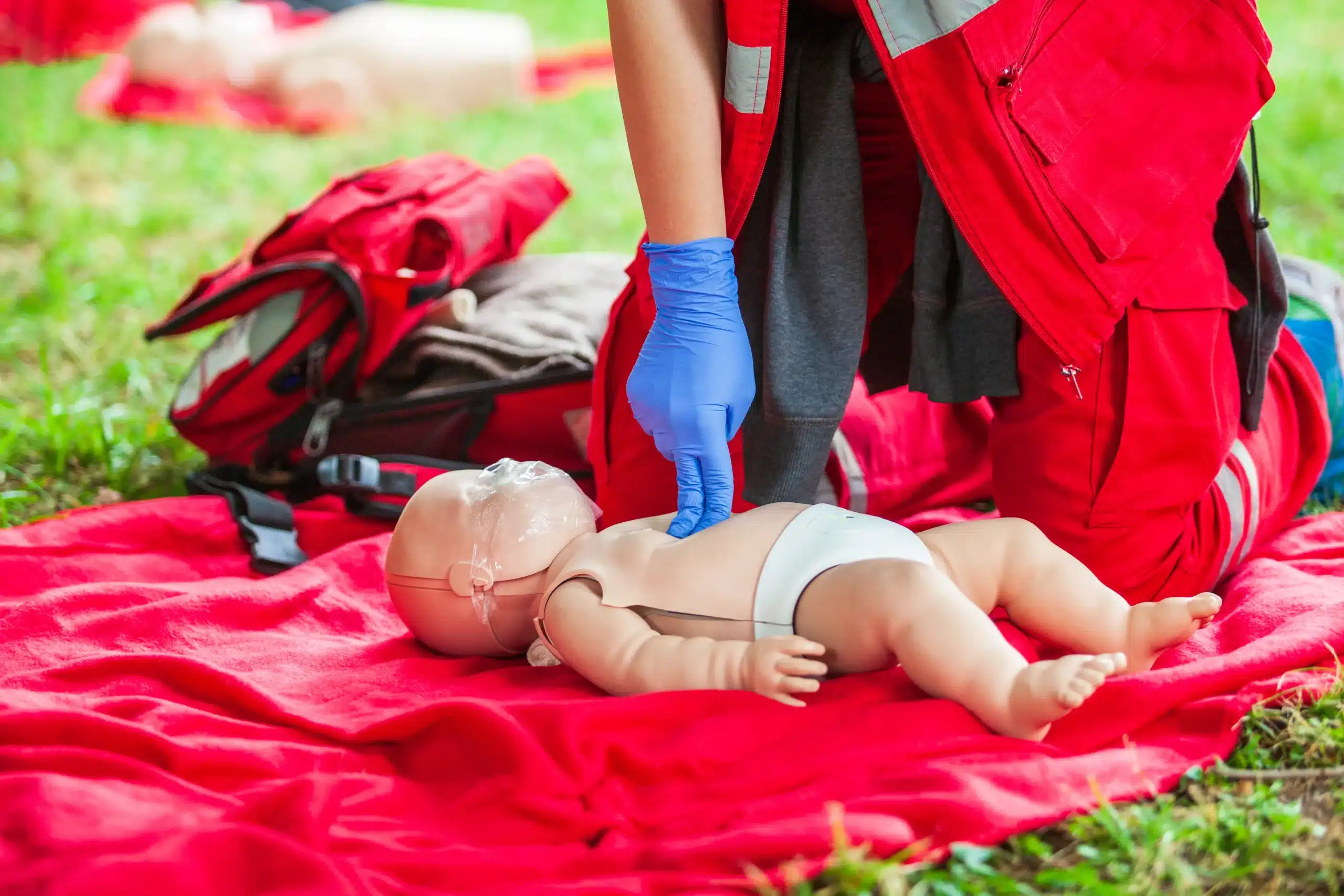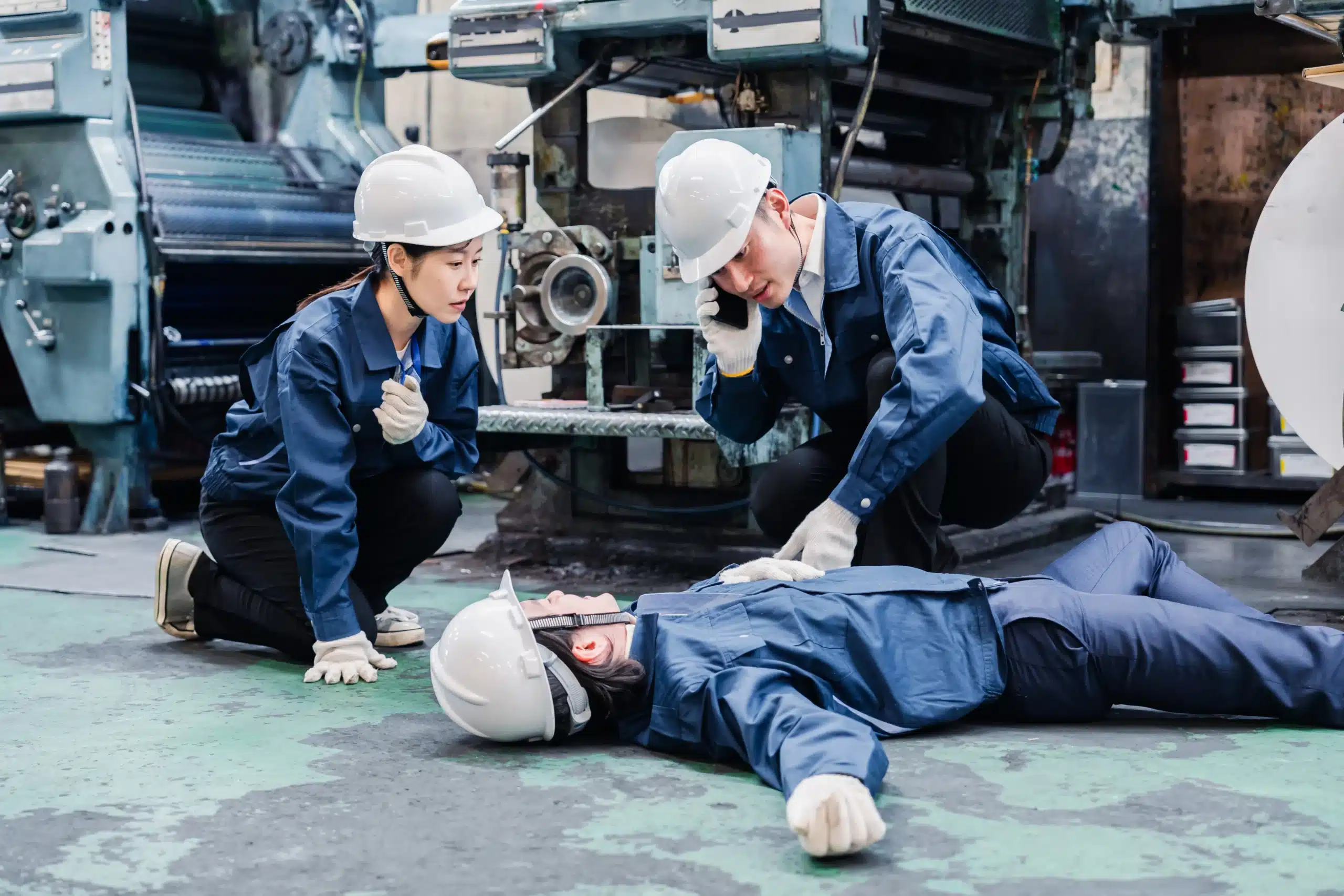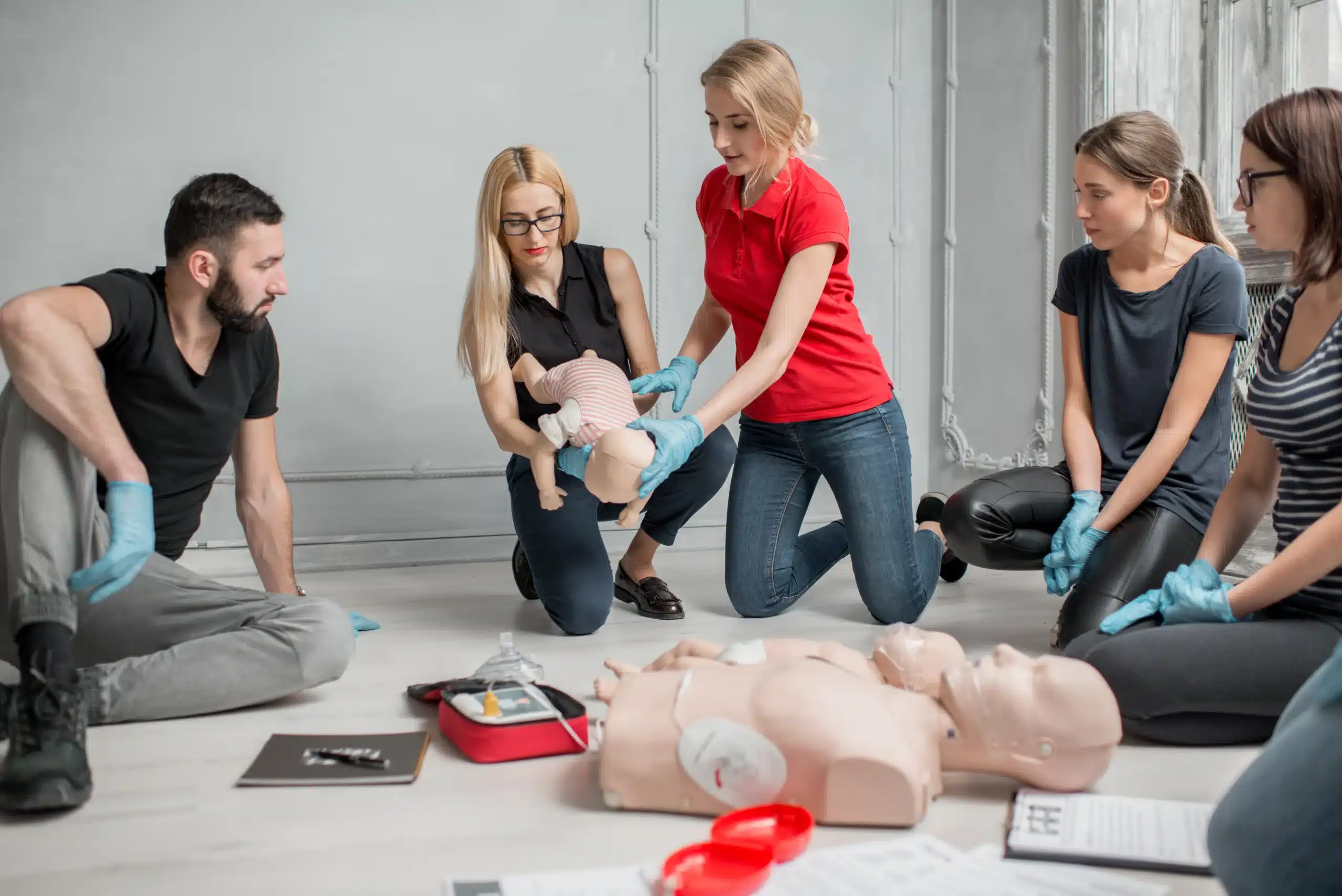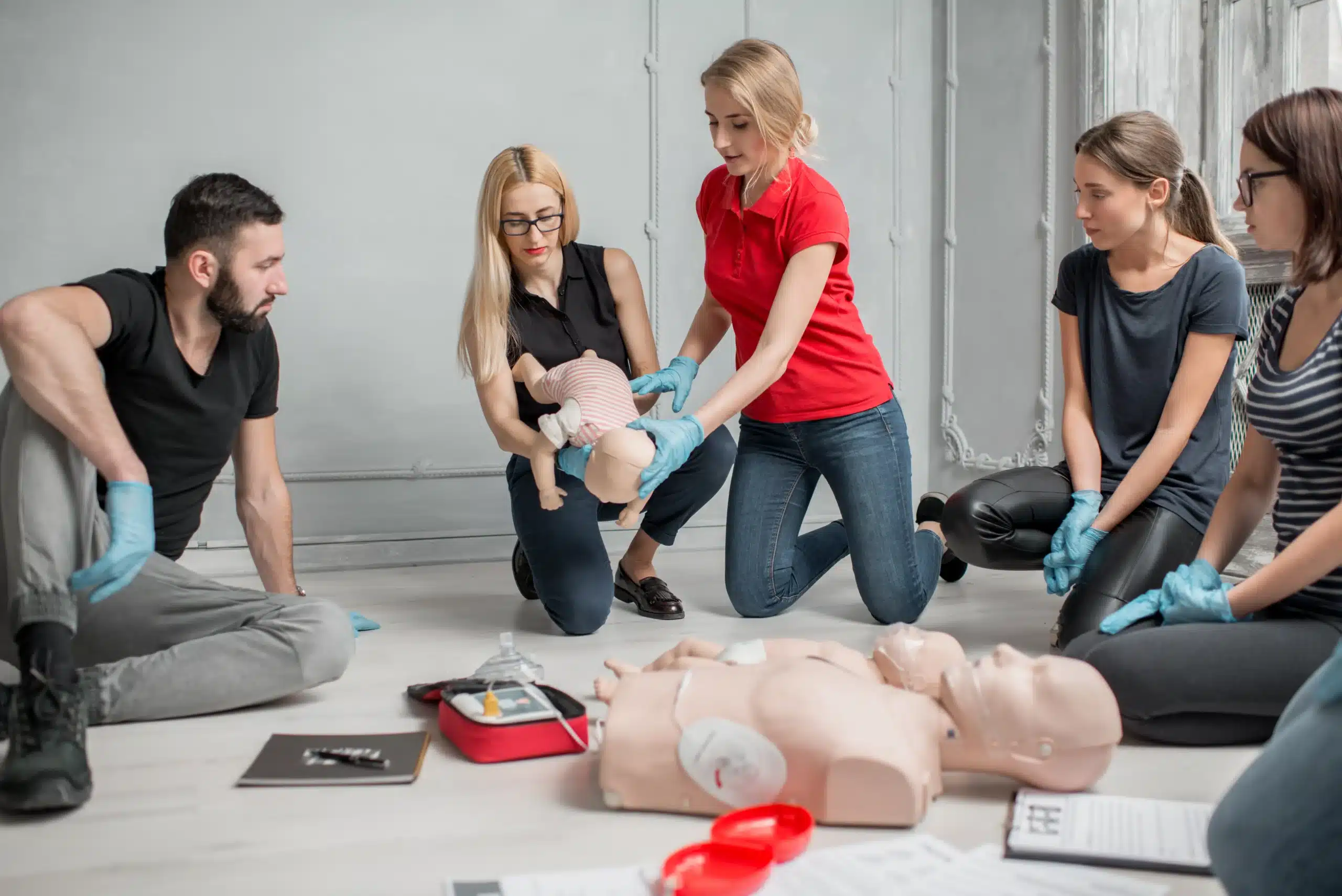As a healthcare professional or caregiver, your skills are your most valuable tools. Among these, Basic Life Support (BLS) is fundamental. But like any tool, it needs regular sharpening. That’s where AHA BLS Renewal comes in. This guide walks you through the process of renewing your BLS certification, from understanding the requirements to finding the right course for your needs. We’ll explore the benefits of staying current, discuss the different learning formats available, and help you locate “AHA BLS Renewal near me.” We’ll also cover costs, time commitment, and answer common questions. Let’s ensure your skills are always sharp and ready to make a difference.
Key Takeaways
- Regular BLS renewal demonstrates a commitment to providing high-quality care. Refreshing your skills and knowledge ensures you’re prepared to respond effectively in emergencies. Choose a renewal course format—online, in-person, or blended—that fits your learning style and schedule.
- Finding a BLS renewal course involves considering factors like cost, location, and provider reputation. Compare options, explore potential discounts, and prioritize what matters most to you. Whether you choose a local training center or an online provider, ensure the course meets your needs and aligns with your budget.
- Staying on top of your BLS certification involves tracking expiration dates and seeking continuous learning opportunities. Proactive preparation and ongoing skill development ensure you’re always ready to provide effective care. Regularly review guidelines and consider advanced training to enhance your life-saving abilities.
What is AHA BLS Renewal?
AHA BLS (Basic Life Support) certification equips you to provide immediate care during emergencies. Like many certifications, it expires every two years. Renewal keeps your skills sharp and ensures you’re following the latest American Heart Association guidelines. You can renew your BLS certification up to 30 days after it expires, so there’s a grace period if life gets busy.
Why Renew Your BLS Certification?
Staying current with your BLS certification is a commitment to providing top-notch care. Renewal offers a chance to refresh your knowledge and refine your skills, giving you confidence in emergencies. Think of it as fine-tuning your life-saving abilities. Whether you’re a healthcare worker, a caregiver, or someone who wants to be prepared, a renewed certification shows your dedication to providing effective care. Plus, many employers require current benefits of BLS recertification.
Key Components of BLS Renewal
The BLS renewal process is simple. You’ll choose a course (online or in-person), complete the coursework, pass an exam, and receive your updated certification card. Some providers offer blended learning, combining online modules with in-person skills sessions. This flexibility lets you choose the format that works best for you. Check out our CPR and First-Aid certification courses. Staying updated with current guidelines, practicing regularly, and understanding protocol changes are all important for successful BLS renewal.
Find BLS Renewal Courses Near You
Need to renew your BLS certification? Finding the right course is easier than you think. Here are a few ways to locate BLS renewal courses:
Online Course Locators
Many organizations offer online BLS renewal courses. These courses offer flexibility and convenience, allowing you to complete your training from anywhere with a reliable internet connection. This can be especially helpful if you have a busy schedule or limited access to in-person training centers. For example, the American Healthcare Academy offers a comprehensive online BLS renewal course.
Local Healthcare Training Centers
Check with local healthcare training centers in your area. Many offer a range of American Heart Association (AHA) certified courses, including BLS. Santa Clara CPR Classes offers various course options and convenient schedules for those in the Milpitas, San Jose, and Santa Clara area.
Community Colleges and Universities
Community colleges and universities often offer healthcare training programs, including BLS certification and renewal courses. Milpitas CPR Classes provides comprehensive CPR training as part of their BLS certification course. These programs can be a great option for those looking for a more structured learning environment.
Mobile Apps for Course Discovery
While specific mobile apps dedicated solely to BLS course discovery might be limited, general course locator apps and websites can help you find BLS renewal training near you. Plus, online BLS courses have become increasingly popular, offering the flexibility to complete your training from anywhere with internet access. This digital approach often integrates seamlessly with mobile devices, making studying and managing your renewal process even more convenient.
Renew Your BLS Certification: A Step-by-Step Guide
Renewing your BLS certification is a straightforward process. This guide breaks down the steps involved so you can easily maintain your lifesaving skills.
Pre-Course Requirements
Before signing up for a BLS renewal course, locate your current BLS provider card to confirm your certification hasn’t expired. It’s important to renew before it lapses to avoid retaking the full course. While some providers offer grace periods, it’s always best to stay current. Next, determine which BLS renewal course you need. The American Heart Association (AHA) offers BLS renewal courses for healthcare providers, which include content relevant to medical professionals. If you’re not a healthcare provider but hold a current BLS certification, make sure to choose the appropriate renewal course. Finally, find a course that fits your schedule and learning style. Milpitas CPR Classes offers a variety of options, including in-person and blended learning formats.
Course Content and Skills Assessment
BLS renewal courses cover essential lifesaving skills, including high-quality CPR, using an automated external defibrillator (AED), and relief of choking. You’ll also review techniques for providing effective rescue breaths and learn about the latest AHA guidelines for CPR and emergency cardiovascular care. The course includes a skills assessment to ensure you can perform these procedures correctly. A certified instructor will evaluate your technique and provide feedback. This hands-on practice builds confidence and ensures you’re prepared for real-life emergencies. You can find more information on the AHA BLS course content on the Milpitas CPR Classes website.
Certification and Documentation
After successfully completing the renewal course and skills check, you’ll receive an updated BLS Provider card from the American Heart Association, valid for two years. This card is proof of your current certification and is often required for employment in healthcare settings or other fields that require BLS skills. Keep your card in a safe place and note the expiration date so you can renew it on time. AHA BLS CPR classes in Milpitas provide official AHA certification cards upon completion. Maintaining a current BLS certification is not just a job requirement for many—it’s a commitment to being prepared to help in critical situations.
Compare BLS Renewal Options: Online vs. In-Person
Choosing the right BLS renewal course often comes down to two main formats: online or in-person. Both have their own advantages and disadvantages, so understanding your learning style and schedule is key to making the best decision.
Pros and Cons of Each Format
Online BLS renewal courses offer incredible flexibility. You can complete the training from anywhere with internet access, fitting it into your busy schedule at your own pace. This convenience is a major draw for many healthcare professionals juggling demanding work and personal lives. However, the online format may not be ideal for those who learn best through tactile experiences and direct interaction with an instructor. Some professionals might find they miss the hands-on aspect and immediate feedback of a traditional classroom setting.
In-person BLS renewal courses provide that valuable face-to-face learning experience. You’ll benefit from direct interaction with instructors and peers, enhancing your learning through hands-on practice and real-time feedback. This format can be particularly helpful for solidifying skills and addressing specific questions as they arise. The downside? In-person classes typically require a greater time commitment, factoring in travel and fixed class schedules. This can present challenges for busy professionals, especially those facing limited support from their employers for recertification.
Hybrid Course Options
Looking for a blend of both worlds? Hybrid courses offer a flexible approach to BLS renewal. The American Heart Association (AHA) offers a blended learning option for their BLS Provider and BLS Renewal courses. These courses are functionally identical in terms of the certification you receive. The hybrid format involves completing an online portion (HeartCode BLS) at your own speed, followed by a virtual hands-on skills check. This approach combines the convenience of online learning with the practical application of in-person skills practice. Since renewal courses often involve reviewing already familiar material, the online portion can be completed more quickly, making hybrid options a smart choice for busy professionals seeking a balanced and efficient learning experience.
BLS Renewal Costs: What to Expect
Let’s talk about money—specifically, how much you can expect to spend on BLS renewal. It’s smart to factor this into your budget so you’re not caught off guard.
Factors Affecting Course Prices
Several things influence BLS renewal costs. Location plays a big role; courses in major metropolitan areas sometimes come with a higher price tag. In Milpitas, BLS certification courses typically cost around $70 for a 3.5-hour class, but this can change based on your location and the training provider. The course format matters too. An online BLS renewal may be more budget-friendly than an in-person class. Also, the training provider itself can impact the cost. Some providers, like Santa Clara CPR Classes, offer a low price guarantee, so comparing options is always worthwhile. They also offer various other AHA-certified courses, which might be helpful if you’re renewing other certifications simultaneously.
Potential Discounts and Group Rates
Look for potential discounts! Some providers offer group rates if you’re renewing with colleagues or friends, which can significantly lower the individual cost. It’s also worth checking if your employer offers reimbursement or discounts for professional development courses like BLS renewal. Another way to potentially save is by exploring online options. Many institutions, like the American Healthcare Academy, offer online BLS renewal courses, which can sometimes be less expensive than traditional classroom settings. Plus, online courses offer greater flexibility, which is a bonus for busy schedules. Don’t hesitate to contact different training centers and ask about potential discounts. A little research can go a long way in saving you money.
BLS Renewal Time Commitment: Duration and Scheduling
It’s smart to understand the time commitment involved before signing up for your BLS renewal. Knowing what to expect helps you plan and choose a course that fits your schedule.
Typical Course Lengths
BLS renewal courses are designed to refresh your essential skills efficiently. In Milpitas, these courses typically take about 3.5 hours. This timeframe allows for a comprehensive review of core concepts, hands-on practice, and a skills assessment. You can find more information on BLS certification in Milpitas on our blog. Your BLS certification is valid for two years after successful completion of the AHA BLS CPR course.
Flexible Scheduling Options
We understand that busy schedules can make finding time for renewal challenging. That’s why we offer flexible scheduling options to accommodate various needs. Safety Training Seminars provides courses seven days a week in Milpitas and surrounding areas. You can find convenient options for CPR certification in Santa Clara, Milpitas, and San Jose. This flexibility allows you to choose a time and day that works best for you, whether it’s a weekday evening, weekend session, or another convenient time slot.
Choose the Right BLS Renewal Provider
Finding the right BLS renewal provider means thinking about what matters most to you. Is it cost, a convenient location, online vs. in-person, or the provider’s reputation? Once you have your priorities straight, choosing a course will be much simpler. Here are a few well-known providers to get you started:
Milpitas CPR Classes
If you’re near Milpitas, San Jose, or Santa Clara, Milpitas CPR Classes offers comprehensive CPR training as part of their BLS certification course. As a woman-owned American Heart Association Training Center, they provide high-quality instruction and an official AHA BLS certification card upon completion. The cost is around $70 for a 3.5-hour class. See their BLS course page for details and to register.
American Red Cross
The American Red Cross is a trusted name in emergency preparedness, offering a variety of CPR and First Aid courses, including BLS certification. Their courses give participants the skills to respond effectively in emergencies. You can easily find a class near you on their website.
National CPR Foundation
The National CPR Foundation provides online CPR and BLS certification courses. This online format offers convenience and accessibility for both healthcare professionals and anyone else looking to get certified.
ProCPR
ProCPR also offers online BLS certification courses. Their flexible, self-paced format lets you complete the training when it works for you. The courses include video demonstrations and quizzes to help you learn the material.
American Heart Association Training Centers
Prefer an in-person class or a blended learning experience? American Heart Association Training Centers offer various BLS renewal courses in different formats. This helps healthcare providers maintain their certifications and learn the latest guidelines. You can search for a Training Center near you on the AHA website.
Prepare for Your BLS Renewal
Getting ready for your BLS renewal doesn’t have to be stressful. With a little preparation, you can walk into your renewal course feeling confident and ready to refresh your lifesaving skills. Here’s how to get started:
Review Course Materials
One of the biggest hurdles people face when renewing their BLS certification is staying up-to-date with the latest guidelines and procedures. Things change, and it’s important to be aware of those changes. Start by reviewing your current BLS provider handbook and any other materials from your previous course. This refresher will help you remember key concepts and identify any areas where you might need extra focus. As the AHA BLS Renewal Dos and Don’ts point out, staying updated with guidelines is an essential component of successful BLS renewal. This will also make your renewal course go much smoother. Remember, BLS renewal ensures you’re trained according to the latest American Heart Association standards.
Practice Key Skills
Hands-on skills are at the heart of BLS. Regular practice is essential for mastering techniques like CPR and using an AED. You can practice on a CPR manikin if you have access to one, or even visualize the steps if you don’t. Many online resources offer videos and tutorials that can guide you through the proper techniques. These online BLS courses are also a great option for brushing up on these skills before your in-person renewal session. After you successfully complete the renewal course and skills check, you’ll receive an updated BLS Provider card from the American Heart Association.
Maintain Your BLS Certification
Once you’ve earned your BLS certification, keeping it current is essential for any healthcare professional. This not only demonstrates your commitment to providing high-quality care but also ensures you’re prepared to respond effectively in emergencies. Here’s how to stay on top of your BLS renewal:
Track Expiration Dates
BLS certifications are typically valid for two years. Mark your renewal date on your calendar and set reminders well in advance. Knowing when your certification expires helps you avoid lapses in your credentials and ensures you’re always ready to respond to emergencies. You can usually renew your BLS certification up to 30 days after the expiration date, but it’s always best to plan and complete your renewal beforehand. Check with your certifying organization or training center for specific guidelines, as some providers may allow renewals up to 60 days after expiration.
Continuous Learning Opportunities
Don’t just think of BLS renewal as a requirement—think of it as a chance to refine your skills and stay up-to-date with the latest life-saving techniques. Recertification provides an opportunity to expand your knowledge and improve your proficiency in providing care. Staying current with resuscitation practices ensures you’re prepared to deliver the most effective care possible. Regularly reviewing guidelines and staying informed about changes in protocols are all part of maintaining your BLS competency. Consider your BLS renewal an ongoing process of continuous learning and improvement in your life-saving abilities. Regularly review and practice key skills to maintain proficiency.
BLS Renewal FAQs
Here are some of the most frequently asked questions about BLS renewal:
How often do I need to renew my BLS certification?
BLS certification is valid for two years. You’ll need to renew your certification every two years to maintain your credentials and stay up-to-date with the latest guidelines. It’s a good idea to mark your calendar or set a reminder a few months before your certification expires, so you have plenty of time to complete the renewal process.
What does the BLS renewal process involve?
The BLS renewal process typically involves completing a renewal course, including a review of essential BLS skills and knowledge and a skills check. After successfully completing these, you’ll receive an updated BLS Provider card from the American Heart Association. This card verifies your current BLS certification.
What are some common challenges people face during BLS renewal?
One common challenge is simply remembering to renew on time! Life gets busy, and it’s easy to let certifications lapse. Setting reminders can be incredibly helpful. Another challenge is staying informed about changes in guidelines and procedures. Medicine is constantly evolving, so staying current with the latest recommendations is crucial. Finally, the cost of training and certification can sometimes be a barrier. Exploring options like group discounts or employer reimbursement programs can help manage these costs.
Why is BLS renewal so important?
BLS renewal is essential for several reasons. It ensures your lifesaving skills are current. Regular renewal keeps you up-to-date on the latest guidelines and best practices, which can significantly impact patient outcomes. Staying current with evolving medical practices is key to providing safe and effective care. Maintaining a current BLS certification is often a job requirement in many healthcare settings.
Can I renew my BLS certification online?
Yes, you often have the option to renew your BLS certification online. This can be a convenient way to complete the renewal process, especially for busy schedules. However, some online courses may still require an in-person skills check. Learn more about the different BLS renewal options available to choose the best fit for your needs.
Related Articles
- BLS Renewal Near Me: Find AHA Courses & Get Certified – Milpitas CPR Classes
- BLS Renewal in San Jose: Your Complete Guide – Milpitas CPR Classes
- BLS Renewal in Santa Clara: Your Easy Guide – Milpitas CPR Classes
- BLS Recertification Near Me: A Complete Guide – Milpitas CPR Classes
- Online BLS Classes in Milpitas: Your Complete Guide – Milpitas CPR Classes
BLS Renewal FAQs
How often do I need to renew my BLS certification?
BLS certification is valid for two years, so you’ll need to renew every two years. It’s best to mark your calendar or set a reminder a few months before your certification expires to give yourself plenty of time to complete the renewal process.
What’s the difference between BLS renewal and taking the full BLS course again?
BLS renewal courses are designed for those who already hold a current or recently expired BLS certification. They’re typically shorter and focus on refreshing your existing knowledge and skills. If your certification has been expired for an extended period, you might need to retake the full BLS course.
What if I let my BLS certification expire?
While some providers offer a short grace period, letting your BLS certification expire generally means you’ll have to retake the full BLS course rather than the shorter renewal course. It’s always best to renew before your certification expires to save time and money.
How can I find BLS renewal courses near me?
You can find BLS renewal courses through various avenues. Check with your local hospitals, healthcare training centers, or community colleges. Many organizations also offer online BLS renewal courses, providing a flexible option for those with busy schedules. Searching online for “BLS renewal courses near me” is a great starting point.
How much does BLS renewal typically cost?
The cost of BLS renewal varies depending on the training provider, location, and course format (online or in-person). It’s always a good idea to compare prices from different providers and inquire about potential discounts, such as group rates or employer reimbursements.






